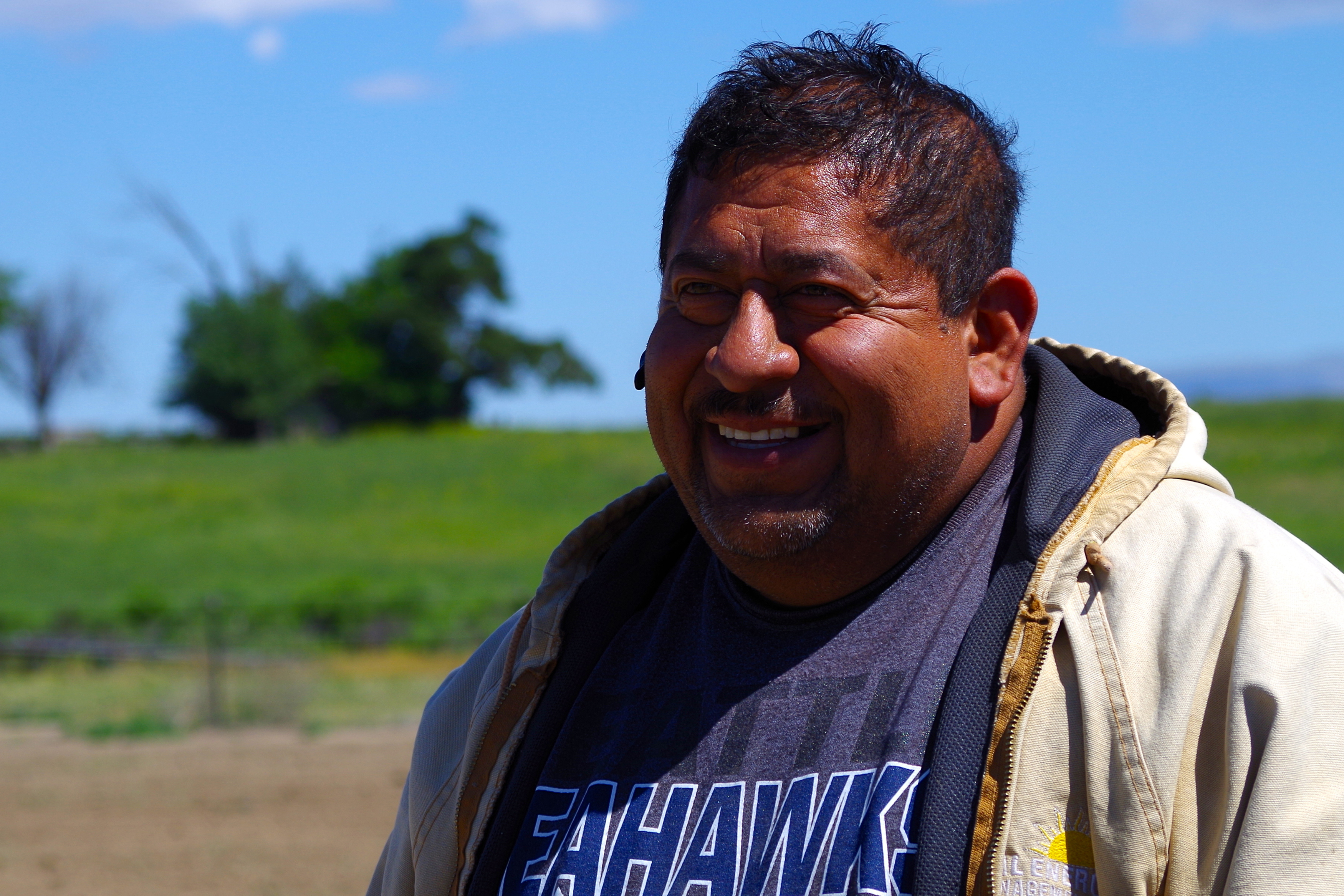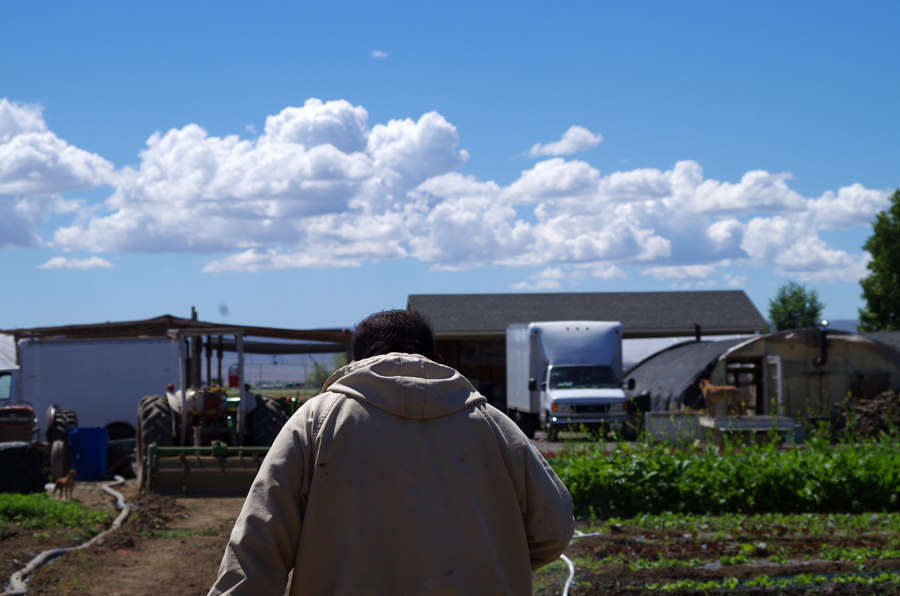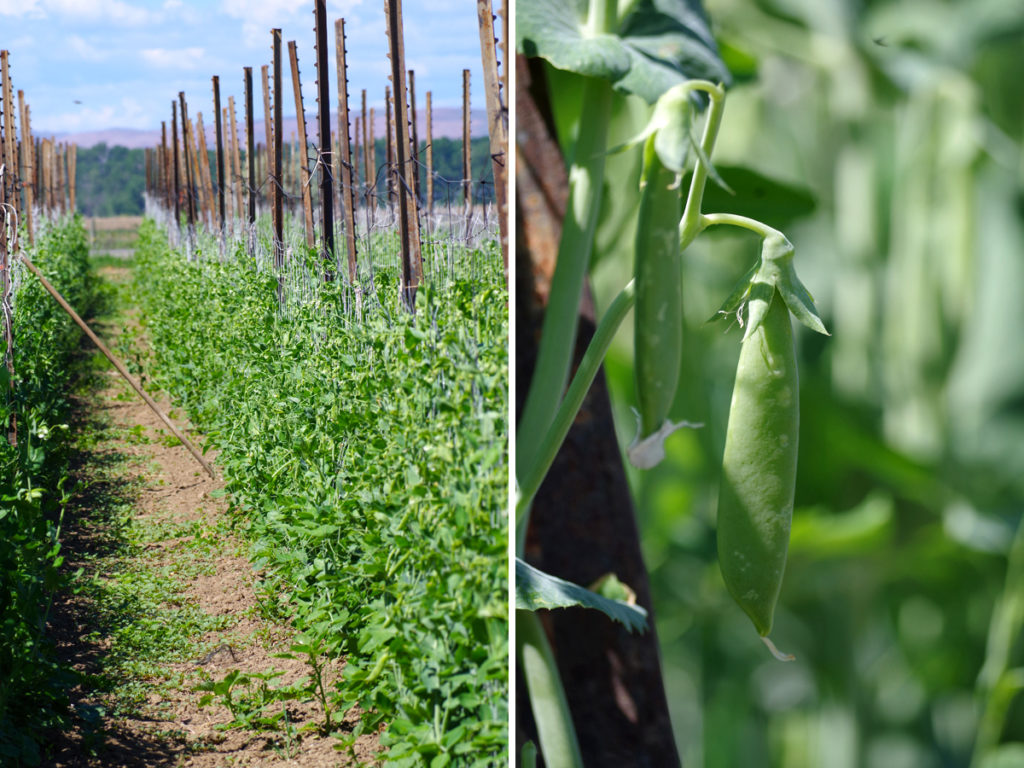On a hot stretch of road heading south, we found ourselves in a wide open patch of farmland where the Mabton-Emerald Valley-Sunnyside borders blur. As so often happens in life, we set out to find one thing, but found something else along the way. We have learned, at rooted, that this is often when the good stuff happens. Seeing greenhouse domes and tidy irrigated rows of something in various hues of green, we flip a maniacal u-turn on the empty road and go back to have a look see. Next thing we know, we’re talking to Jose Bautista of Family Bautista Farms.
Turns out he’s a grower who, for the last 20 years, has been selling at big city farmer’s markets. If you’ve ever been to one of the many beautiful markets in Seattle, Portland or Vancouver, chances are you’ve seen his goods. His farm is about 53 acres, with everything from corn to kohlrabi. He even has a small orchard with cherries, peaches, nectarines and apples. With a workday that begins at 4 a.m. and ends around 9 p.m., the term “hard work” doesn’t seem adequate. He says that he doesn’t want to give his work away, and the prices he can fetch at these markets makes it all worthwhile.
Now he wasn’t expecting us, and we weren’t looking for him when we pulled in, so after the dust settles and we explain who we are, Jose generously agrees to show us around. We begin with the greenhouses. Standing in the thick heat of the space, he says that he starts all of his plants from seed beginning in January. Looking around we see many different types and colors of lettuce, Swiss chard, kale, spinach and parsley to name a handful.
Moving out into the field, a few workers are planting several different varieties of peppers on our right, and an assortment of leafy greens on our left. As we walk and chat a short while, the scene changes several times with the crop varieties—turnips, red and gold beets, fava beans, carrots, snap peas—and on and on it goes.
 Jose was extremely proud to tell us as we watch a wet spot swell down a row, that several years ago he put in a well so he could use his own clean water rather than rely on the irrigation water. While he’s not officially certified organic for reasons of paperwork, he uses all organic practices.
Jose was extremely proud to tell us as we watch a wet spot swell down a row, that several years ago he put in a well so he could use his own clean water rather than rely on the irrigation water. While he’s not officially certified organic for reasons of paperwork, he uses all organic practices.
We were so grateful that he gave us the precious gift of his time. Under a big sky of cotton ball clouds, listening to chickens clucking loudly from a nearby coop while we are visually seduced by an endless variety of food still in the ground, Aileen, Shelley and I are totally impressed. It is evident that Jose is a hands-in-the-earth entrepreneur who is always thinking of ways to find the best practice to maximize his yield and bring it to the most advantageous marketplace, where the sweat of his brow can be rewarded.
It was an awesome set up to see, not to mention delicious. We all licked our lips a time or two, looking at ready to snap peas or the cool water drops on a shiny red lettuce leaf. Being rooted as we are, we’re always excited to see a food source up close and personal like this, from where we know the Yakima Valley will radiate out onto the plates of America.












Hard working Joe and his family. Dream come true when you set your mind to get it done. Congratulations to Joe Bautista Family and Farm.
Hard working Bautista Family with Dad Joe leading the way.
What an inspiration for all of us. Would be a great field trip for our school children!